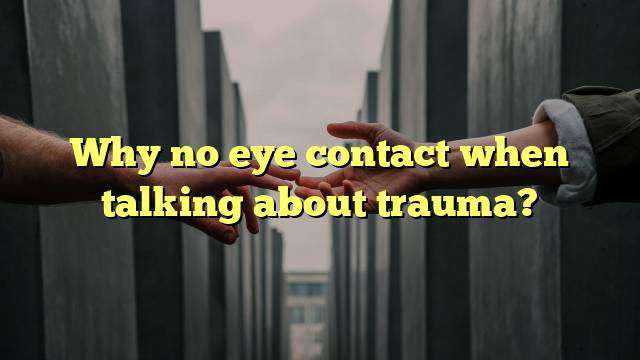Why Averting Eye Gaze Is Critical for Trauma Patients
For many of us, direct eye contact is an essential part of communication. Our eyes can express emotions, such as trust and understanding, which plays a vital role in connecting with people. However, for trauma patients, direct eye contact can be interpreted as threatening, triggering a negative reaction. This is why Stephen Porges, PhD has written about the importance of averting eye gaze when working with trauma patients.
The Role of Eye Contact in Trauma
Research shows that the way someone looks at us can convey meaning and elicit an emotional response. Therefore, when it comes to trauma patients, it can be particularly important to maintain appropriate eye contact. Trauma can be defined as an event or experience that leaves an individual feeling helpless and overwhelmed. These events can leave lasting psychological scars and can often lead to negative outcomes, including depression, anxiety, and post-traumatic stress disorder (PTSD).
When a trauma patient is in a situation where direct eye contact is made, it can be interpreted as threatening, thus triggering a negative reaction. This is why it is important to use subtle cues, such as averting eye contact, when working with trauma patients. Averting eye contact can help to create a sense of safety and security for trauma patients and can help to minimize the risk of triggering a negative reaction.
The Benefits of Averting Eye Gaze
Averting eye gaze when working with trauma patients can have a number of benefits. First and foremost, it can help to create a sense of safety and security for the patient. By avoiding direct eye contact, the patient is less likely to feel threatened or intimidated. This can help to create a more comfortable environment for the patient, which can be beneficial for both the patient and the therapist.
Furthermore, avoiding direct eye contact can also help to reduce the patient’s anxiety levels. When a patient feels intimidated or threatened, it can cause their anxiety levels to increase, which can be detrimental to the therapeutic process. By avoiding direct eye contact, the patient is less likely to feel anxious or overwhelmed, which can be beneficial for both the patient and the therapist.
Finally, averting eye gaze can also help to foster a positive relationship between the patient and the therapist. By avoiding direct eye contact, the patient is more likely to feel respected and understood, which can help to create a more trusting and supportive relationship between the patient and the therapist.
Conclusion
Averting eye gaze when working with trauma patients can be beneficial for both the patient and the therapist. By avoiding direct eye contact, the patient is less likely to feel threatened or intimidated, which can help to create a more comfortable environment for the patient. Furthermore, it can also help to reduce the patient’s anxiety levels, as well as foster a positive relationship between the patient and the therapist. Therefore, it is important to be aware of the role of eye contact in trauma and to consider the benefits of averting eye gaze when working with trauma patients.



